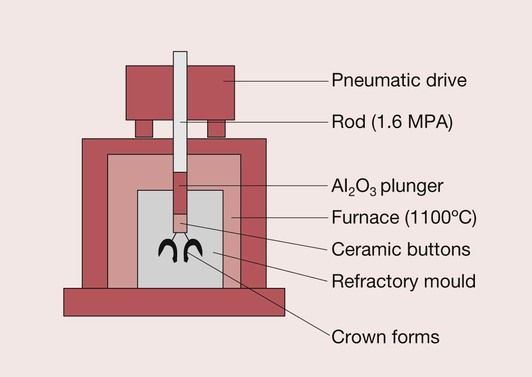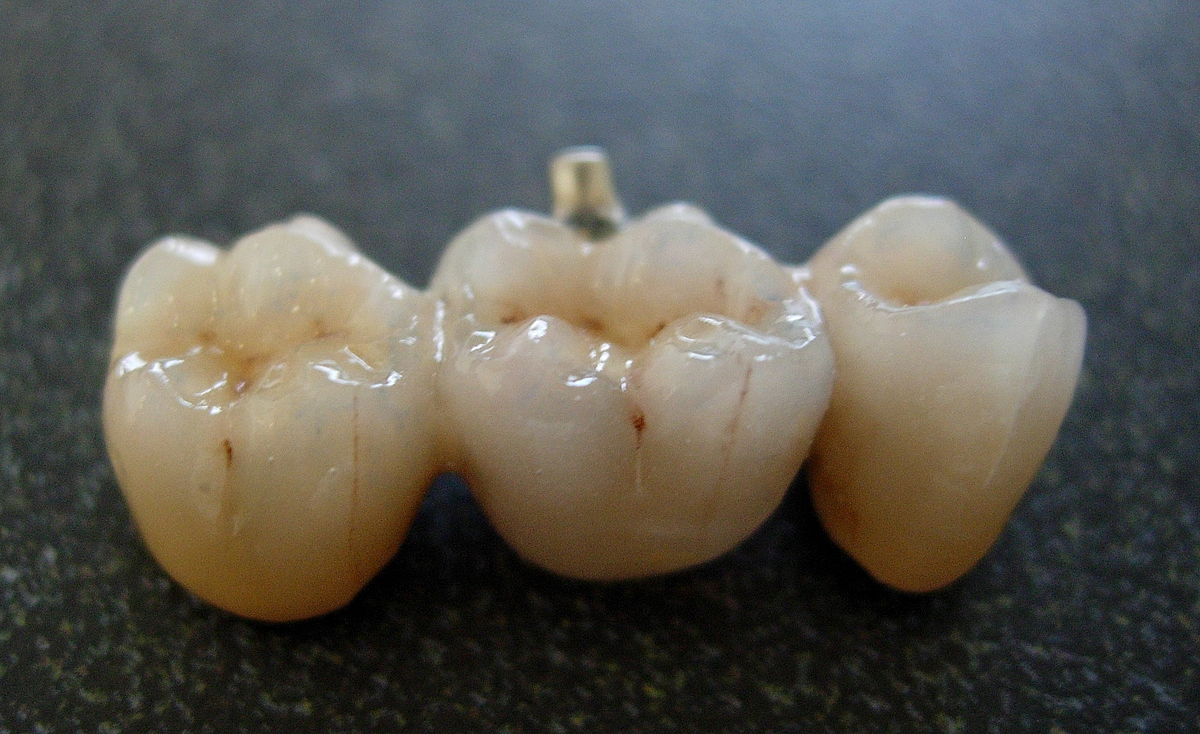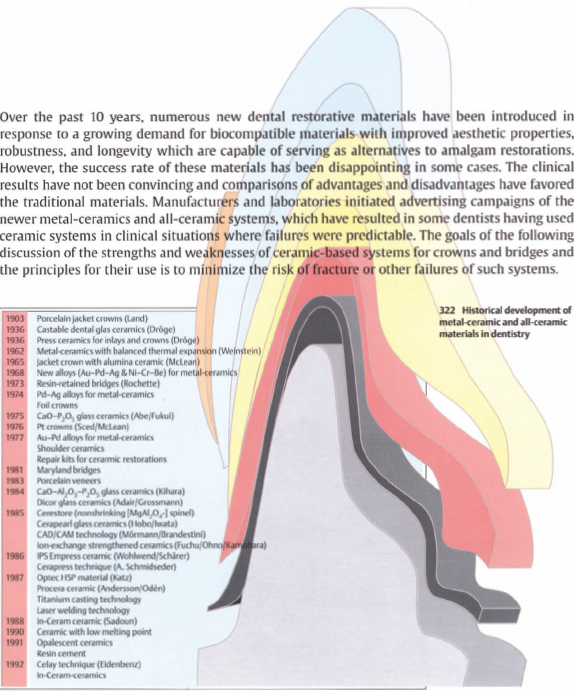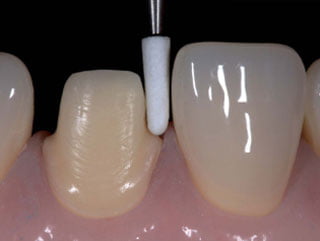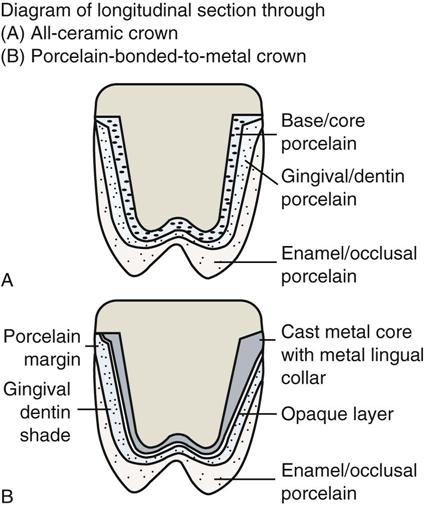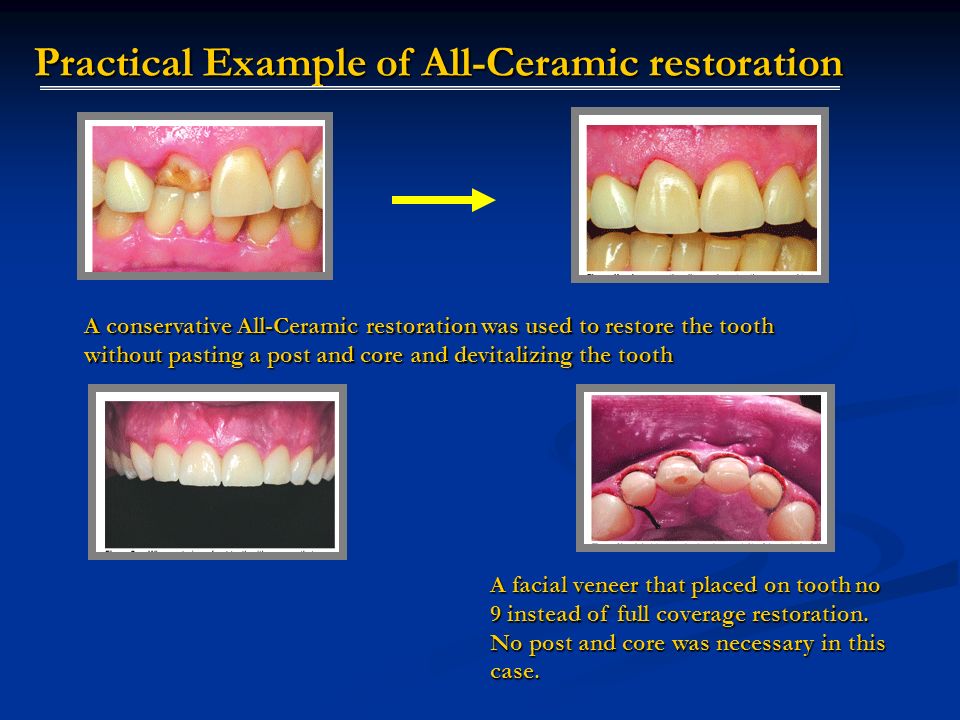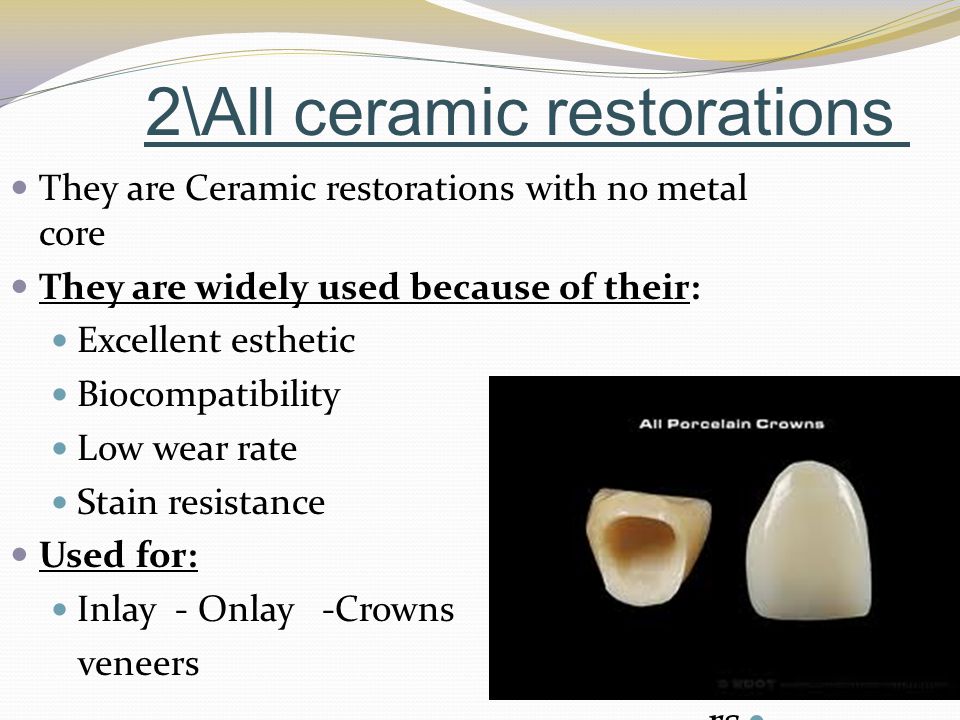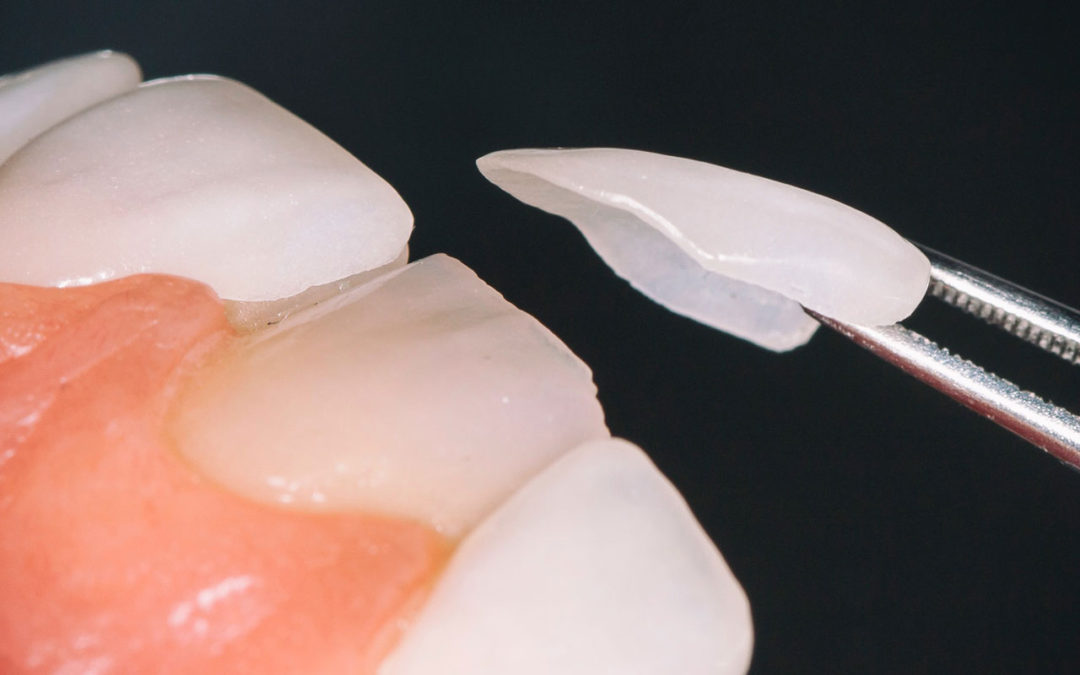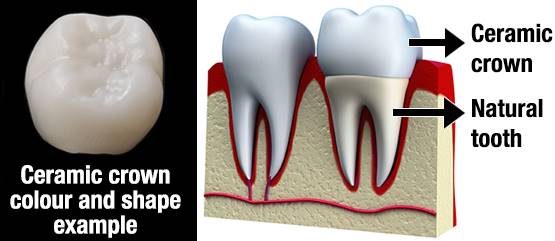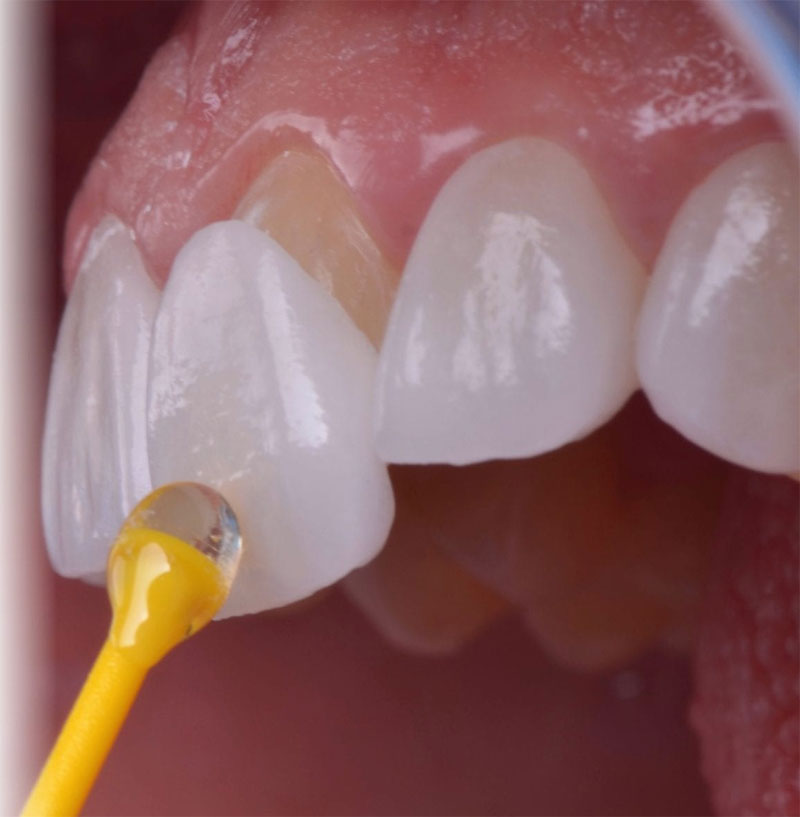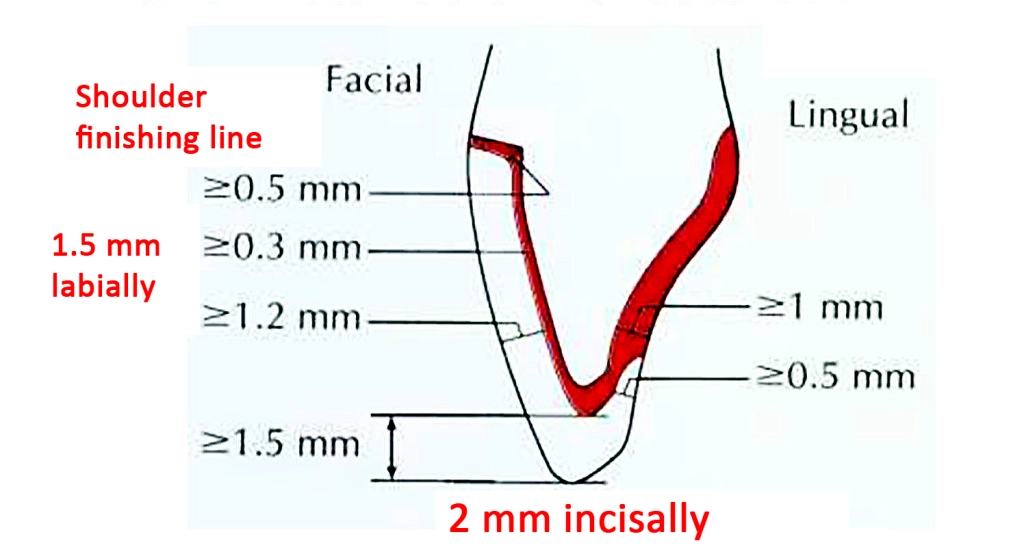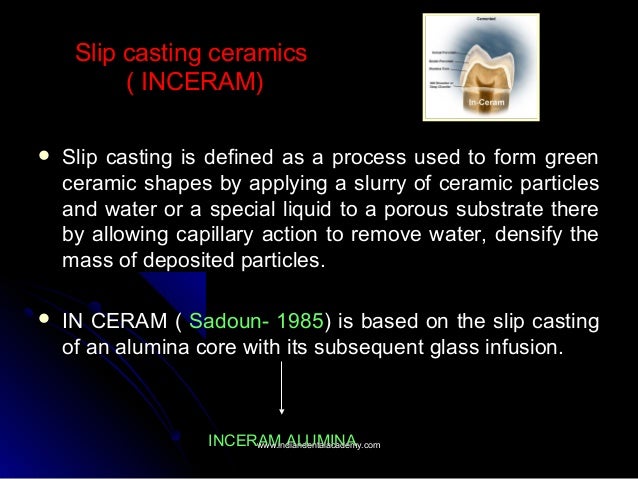The fracture of ceramic dental restorations may initiate at micro defects in the porcelain or ceramic body that are introduced during the materials fabrication process or after clinical adjustment.
Ceramic restorations definition.
The fusion of ceramics porcelain to an alloy of two or more metals for use in restorative and prosthodontic dentistryexamples of metal alloys employed include cobalt chromium gold palladium gold platinum palladium and nickel based alloys.
Since there is a solid connection between the masking ceramic and the metal almost no changes of color will occur in the ceramic construction.
The biggest advantage of the ceramic restoration is its permanent aesthetic quality.
Metal ceramic restorations n.
Ceramic restorations are difficult to polish once they are cemented because of access problems and lack of proper instruments to perform this task 8 classification of dental ceramic restorations.
Ceramic restoration synonyms ceramic restoration pronunciation ceramic restoration translation english dictionary definition of ceramic restoration.
Damage too great for restoration.
An act of restoring.
Restoration of the sculpture was.
If fracture occurs repair is not considered a definitive treatment 8 difficult intraoral polishing.
An instance of restoring or of being restored.
Despite the successful introduction of ceramic core systems bondable ceramic restorations in the form of inlays onlays veneers and crowns still form a major part of conservative aesthetic prosthodontics.
An all ceramic tooth colored restoration is finished and ready to bond in place.
Next the specific software takes the digital picture and converts it into a 3d virtual model on the computer screen.
Select chapter 6 advanced ceramics book chapter full text access chapter 6 advanced ceramics.
1 although there is a plethora of all ceramic systems many are becoming obsolete almost as quickly as they were introduced due to the distinct advantages of lithium disilicate and zirconia.
Influence of silane and heated silane on the bond strength of lithium disilicate ceramics an in vitro study.
An optical impression of the prepared tooth is taken using a camera.
A ceramic block that matches the tooth shade is placed in the milling machine.
